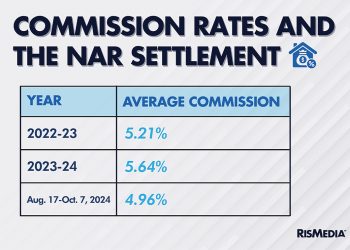RISMEDIA, Nov. 30, 2007-As a part of its 75th anniversary look at important aspects of the real estate appraisal profession, the Fall 2007 issue of The Appraisal Journal offers several perspectives on appraiser education over the decades. The issue also features articles on several unique appraisal topics: cell phone towers, antiterrorism measures in commercial buildings and road access management.
In “The Education of a Profession,” Richard L. Parli, MAI, traces the growth of formal appraisal education beginning in the 1930s, pointing out how such programs have responded to the needs of those in the valuation profession. He notes that, “unlike law and accounting, the appraisal profession has always accorded reverence for experience-experience that is traditionally obtained in tandem with education.” A historic reprint illustrating early views on appraiser education accompanies this article.
Appraisal education in the 21st century is the focus of the article, “Appraisal Institute Education: Knowledge-Experience-Integrity” by Joseph C. Magdziarz, MAI, SRA, and Sheila F. Crowell. In the article, the authors discuss the total revamping of the Appraisal Institute’s education program to meet and exceed regulatory requirements taking effect in 2008.
Rounding out the education theme of the issue, John D. Dorchester, Jr., MAI, a past president of the Appraisal Institute, offers his personal recollections of the beginnings of educational courses for professional appraisers.
The various antiterrorism security measures that may affect the value of any high-profile, high-occupancy commercial property, which appraisers may encounter today, is the subject of Krisandra Guidry’s article, “Antiterrorism Security Measures for Commercial Buildings: Inspection and Appraisal Guidelines.” Guidry offers suggestions for inspecting these features and considering them in the appraisal process.
In “The Effect of Distance to Cell Phone Towers on House Prices in Florida,” Sandy Bond, PhD, outlines the results of a 2004 study of the sale of homes near cell phone towers. The study compares the sale prices of similar homes before and after the construction of towers to determine the effect of linear distance of homes to towers on residential property prices.
According to Bond, the results show that prices of homes decreased by 2% on average after a tower was built and that this effect generally diminished with distance from the tower. The appraisal of property along traffic routes requires consideration of access constraints that may affect a property’s use and value. In “Value Implications of Current Trends in Road Access Management,” Sue L. Hoell describes the ways that governmental entities may restrict access and offers appraisal techniques for estimating the value of access.
The Appraisal Journal, published quarterly by the Appraisal Institute, serves as a forum for advancing appraisal theories and practices. Containing articles, columns and letters written by experienced appraisers and educators, The Appraisal Journal presents ideas, concepts and analytical techniques. Geared toward appraisers, educators and other real estate professionals, each issue offers alternative valuation methods for serious thinkers seeking creative solutions to appraisal problems.
For more information, visit www.appraisalinstitute.org.










